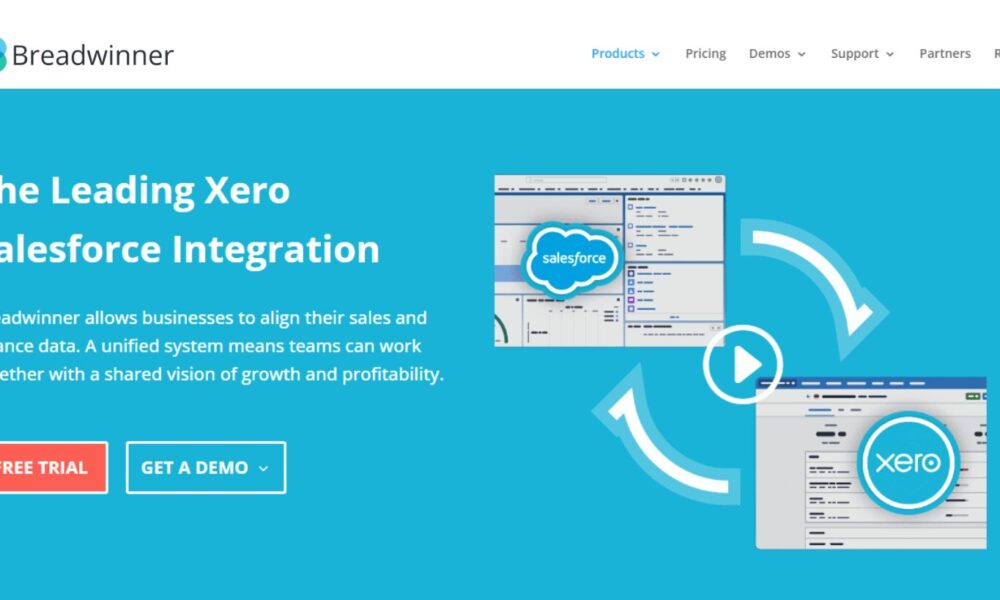How Salesforce Xero Integration Helps Sales and Finance Teams Work Smarter Together

Why Connected Sales and Finance Systems Matter
If you have worked in sales for a while, you have probably noticed that sometimes CRM and finance systems are disconnected. It takes time to update and align them, and the same data often has to be entered more than once. If two different teams need to communicate to pass the data and manually input it into multiple platforms, the chances of errors increase significantly. Invoices can be delayed, and it can be hard to know which customers have paid and which orders are still pending.
Insight:
A recent State of SaaS Integrations Report by Partner Fleet, Paragon, and PartnerStack shows that 84% of businesses say integrations are “very important” or a “key requirement” for their customers. And only 1% of SaaS businesses said integrations are not important. This makes it clear that most companies see connected systems as essential, not optional.
With the connection, sales and finance teams can work from one shared view of customer and financial data. Both teams see the same details about deals, invoices, and payments, which helps avoid double work and errors. In this article, we will look at the Salesforce Xero integration, why sales and finance teams benefit from working together, and how to connect Salesforce with Xero using best practices.
Let’s take a deeper look at both systems. Xero is an online accounting platform that helps businesses manage invoices, payments, expenses, and cash flow. Finance teams use it every day to keep track of the numbers and make sure records are accurate.
On the other hand, Salesforce is a customer relationship management (CRM) system. Sales teams use it to follow leads, track opportunities, and manage customer relationships from the very first contact all the way to closing a deal.
So, how does Salesforce integrate with Xero? You can connect Salesforce and Xero through APIs, middleware platforms, or custom development, and also by using integration apps available on the Salesforce AppExchange. The AppExchange works like a marketplace, where you can search for different solutions, compare features, and check customer reviews to find the one that best fits your company’s needs.
Once installed, these apps let sales and finance work together in one view. For example, when a deal is closed in Salesforce, an invoice can be created automatically in Xero. This means nobody has to enter the same details twice, mistakes are reduced, and both teams can see exactly what’s happening at any moment.
Sales and Finance Teams Before and After Salesforce Xero Integration
When sales and finance work with separate systems, both teams spend extra time checking details, entering data, and reconciling information. Integration changes that, giving both teams a clear, shared view of customer and financial data.
Here’s a quick look at how workflows change with integration:

Key Features of Salesforce and Xero Integration
The Salesforce to Xero integration, built for example using Breadwinner, brings key features that help both sales and finance teams work with the same information. Here are some of the main ways it makes daily work easier:
1) Real-time sync of contacts, accounts, and invoices. Any updates in Salesforce automatically appear in Xero, and changes in Xero are reflected in Salesforce. Both teams are always looking at the same data.

Invoices in Breadwinner
2) Automated invoice creation from closed deals. Instead of re-entering deal details, sales reps can generate an invoice in Xero directly from Salesforce, for example, from an Opportunity. A button click launches a guided wizard to create the invoice, ensuring the right data flows to finance without extra steps. This saves time and reduces errors.

New Xero Invoice
3) Payment status updates in Salesforce. When a customer makes a payment, the information appears in Salesforce instantly. Sales reps can see what’s been paid and what’s outstanding without contacting finance.

Xero Invoices on Opportunity
4) Support for multiple currencies and tax rates. Businesses working internationally can handle different currencies and tax rules seamlessly, without juggling separate systems or manual calculations.
5) Reporting and analytics combining sales and financial data. Managers get a complete view of revenue, cash flow, and sales performance in one place. This makes it easier to make decisions, spot trends, and plan for the future.
6) Better collaboration between teams. Sales and finance no longer work in silos. Shared data helps avoid confusion, improves communication, and ensures everyone is on the same page.
7) Reduced manual work and errors. Automating tasks like invoice creation and payment updates cuts down repetitive work, freeing up time for both teams to focus on higher-value activities.
Pre-Integration Checklist
If you are planning to make a Salesforce and Xero integration, here is a checklist to help you get ready. Following it will make connecting the two systems straightforward and help both teams start using the integration without problems.
- Check your Salesforce edition and API access: Make sure your Salesforce edition supports API access. Without it, the integration will not work properly.
- Set up your Xero account: Ensure your Xero account is ready, with the right subscription and access for connecting to Salesforce.
- Plan field mapping: Decide in advance which fields in Salesforce match fields in Xero, such as contacts, products, and invoices. This avoids confusion later.
- Verify user permissions: Make sure the users managing the integration have the right permissions in both systems. They should be able to create records, update data, and view reports as needed.
How to Integrate Salesforce with Xero
To connect Salesforce to Xero, we will use a third-party app from AppExchange. We selected a Breadwinner as an example. This integration allows sales and finance teams to share the same data and reduce manual work. Here’s a step-by-step guide to get started:
1) Install the Salesforce Xero connector from AppExchange: Search for the connector on AppExchange and install it into your Salesforce environment.

Breadwinner for Xero on Appexchange
2) Confirm installation: Confirm installation in your environment and choose the users.

Install Breadwinner for Xero
3) Authenticate your Salesforce and Xero accounts: Log in to both systems and allow them to connect. This ensures that data can flow freely between Salesforce and Xero.

Set up the Breadwinner App
4) Map your data fields: Decide which fields in Salesforce correspond to fields in Xero, such as contacts, products, and invoices. Accurate field mapping ensures the right data ends up in the right place.
5) Test the sync with sample data: Before rolling out the integration, try a few sample records to check that invoices, payments, and customer information sync correctly.

Xero Contacts
6) Roll out to production: Once testing is complete and everything works as expected, enable the integration for your full Salesforce and Xero accounts.
Using a connector like Breadwinner to build Xero to Salesforce integration ensures that both sales and finance teams always see the same information. This reduces errors, saves time, and makes collaboration easier. For more detailed setup instructions, you can refer to the Breadwinner Xero Help Center.
Salesforce Integration with Xero: Best Practices
To make sure your teams get the full benefit of the integration, it’s important to follow a few simple practices. These steps help keep data accurate, maintain smooth workflows, and make sure both sales and finance are always working with the same information.
1. Train Both Sales and Finance Teams
Make sure everyone knows how to access and use the integrated data. Take time to explain what information each team can see and how updates flow between Salesforce and Xero. Proper training helps avoid mistakes and ensures both teams take full advantage of the integration.
2. Schedule Periodic Sync Health Checks
Even after the integration is set up, it’s important to check that data continues to sync correctly. Set up regular reviews of invoices, payments, contacts, and other key records. This way, any errors or mismatches can be caught early, before they impact reporting or daily work.
3. Keep Mapping and Permissions Updated
As your business grows, you may add new fields, products, or workflows. Each change can affect how data flows between Salesforce and Xero. Regularly review your field mapping and user permissions to ensure the integration continues to work accurately and both teams can access the information they need.
Common Challenges and Troubleshooting Tips
Even with a well-planned integration, teams can run into a few common issues. Knowing what to watch for and how to handle it can save time and keep both Salesforce and Xero running smoothly. Here are some of the challenges you might face:
Challenge 1: Handling Duplicate Records
Sometimes the same contact, account, or invoice can appear twice in either system. This usually happens when records are created in both Salesforce and Xero before syncing.
Solution:
- Review and refine your field mapping to ensure consistency.
- Use the built-in duplicate detection and merge tools to keep records clean.
- Schedule regular data cleanups to minimize confusion and errors.
Challenge 2: Fixing Failed Syncs
A sync might fail due to missing data, incorrect field mapping, or temporary connectivity issues.
Solution:
- Review integration logs to identify the failed records and reasons.
- Correct missing or mismatched data and re-run the sync.
- Schedule periodic sync checks to catch and resolve issues early.
- Consider setting up automated alerts for failed sync attempts.
Challenge 3: Managing Multi-Currency Transactions
If your business deals with multiple currencies, invoices and payments might not match correctly between platforms.
Solution:
- Ensure that currency fields are mapped correctly across both systems.
- Regularly update and align exchange rates.
- Run test transactions in multiple currencies before a full rollout.
- Document and train teams on handling cross-currency scenarios.
Did you know that, based on Salesforce, 41% of leaders struggle to understand data, and 33% cannot turn it into insights? What truly matters is making data clear, usable, and actionable.
Security and Compliance Considerations
When connecting Salesforce and Xero, it’s important to think about how your data is protected and how you comply with legal requirements. Both systems handle sensitive customer and financial information, so security and compliance should be a priority.
Data Security During Sync
All data transferred between Salesforce and Xero is encrypted to prevent unauthorized access. Authentication ensures that only users with the right permissions can connect to the systems and access information. Regularly reviewing user access and integration settings helps keep your data safe.
Compliance Requirements
Depending on your region or industry, you may need to follow specific regulations for handling customer and financial data, such as GDPR, CCPA, or accounting standards. Make sure both Salesforce and Xero are configured to meet these requirements. Keeping accurate audit trails and reviewing data access logs can also help maintain compliance.
Conclusion: Bringing Sales and Finance Together
Integrating Salesforce and Xero brings sales and finance teams together, giving both sides access to the same real-time data. Sales can create invoices faster, track payments immediately, and communicate more effectively with customers. Finance can reduce manual work, see the sales pipeline instantly, and manage cash flow more accurately.
Tools such as Breadwinner, available on the Salesforce AppExchange, make this integration easier by providing prebuilt connections between Salesforce and Xero. These solutions help ensure that invoices, payments, and customer data flow reliably between systems without the need for heavy custom development.
To get the most out of the integration, set it up properly, keep field mappings and permissions updated, and check that data continues to sync correctly. Once the basic integration is running smoothly, you can explore advanced automation, such as notifications for overdue invoices or combined reporting for management.

Source: How Salesforce Xero Integration Helps Sales and Finance Teams Work Smarter Together



